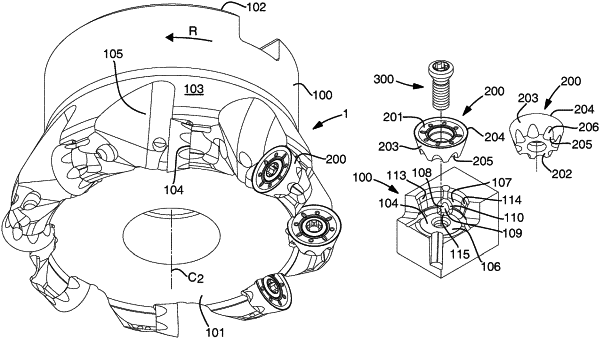| CPC B23C 5/2213 (2013.01) [B23C 5/06 (2013.01); B23C 2200/045 (2013.01); B23C 2200/128 (2013.01); B23C 2210/163 (2013.01); B23C 2210/168 (2013.01)] | 14 Claims |

|
1. A cutting tool for chip removing machining of workpieces, the cutting tool comprising:
a body; and
at least one cutting insert arranged to be mounted in an insert seat of the body, the cutting insert and the insert seat sharing a common central axis when the cutting insert is mounted in the insert seat, wherein the cutting insert has a circular basic shape and comprises:
a rake surface,
a bottom surface opposite to the rake surface,
a side surface extending between the rake surface and the bottom surface,
a cutting edge formed in a transition between the side surface and the rake surface, and
at least one anti-rotation stopping indent formed in a transition between the bottom surface and the side surface and including a first stop surface, wherein the insert seat of the body comprises:
a bottom support surface configured to abut and support the bottom surface of the cutting insert,
a side wall including at least one side support surface configured to abut and support the side surface of the cutting insert,
at least one anti-rotation stop protruding with respect to the side wall and comprising a second stop surface, and
a concavely curved first duct separating the second stop surface from the side wall, wherein the at least one anti-rotation stop is arranged to inhibit rotation of the cutting insert in the insert seat about the common central axis by contact between the first stop surface and the second stop surface, wherein the second stop surface is completely located within the anti-rotation stopping indent when the cutting insert is mounted in the insert seat, and, when seen in a section taken perpendicularly to the common central axis, an angle of less than 180° is formed between a tangent to the second stop surface and a tangent to the first duct at a transition between the second stop surface and the first duct, and
a concavely curved second duct extending between the second stop surface and the bottom support surface.
|